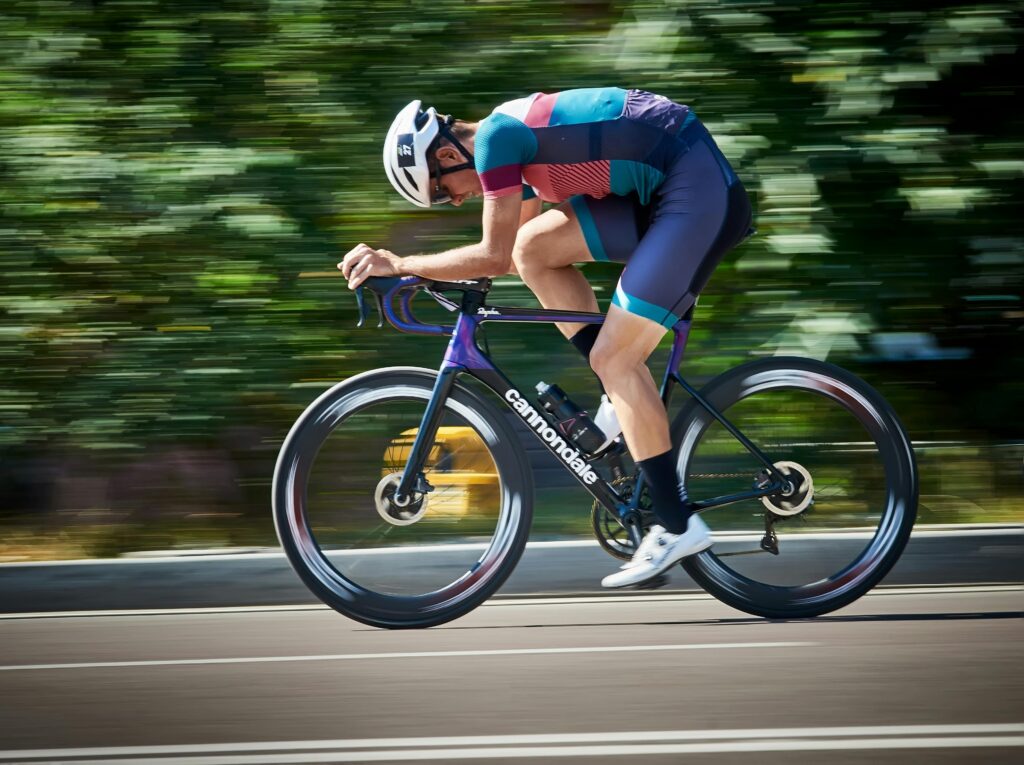Time trials, often called the “race of truth,” are a cornerstone of cycling. They strip the sport down to its essentials: you, your bike, and the clock. Among the various forms of time trial testing, an 8-mile course offers a perfect balance between anaerobic endurance and muscular endurance assessment, making it an ideal training tool for cyclists aiming to track progress and enhance performance.
This blog explores how to conduct an 8-mile time trial, why it’s a valuable training and testing method, and strategies to make the most of it during your training cycles.
Why an 8-Mile Time Trial?
An 8-mile time trial strikes a balance between shorter, high-intensity efforts and longer endurance tests. It’s long enough to push your anaerobic endurance and short enough to demand maximum effort throughout.
1. Measures Fitness Gains
By recording time, power, and heart rate data, the 8-mile time trial provides a clear picture of your anaerobic endurance, muscular efficiency, and pacing ability. Over time, improvements in these metrics signal the effectiveness of your training plan.
2. Builds Race-Specific Skills
Time trials simulate the sustained effort required in cycling races, gran fondos, or solo breakaways. Practicing these efforts sharpens your pacing strategy, mental focus, and ability to sustain high power outputs.
3. Simple and Repeatable
Unlike structured intervals or lab-based tests, time trials are easy to execute and repeat under consistent conditions, offering reliable benchmarks for tracking fitness over time.
Preparing for the 8-Mile Time Trial
1. Choose the Right Course
Select a flat, out-and-back route with minimal traffic and interruptions. The course should have a clear starting point, turnaround, and finish line to ensure repeatability. Mark these points during your first test for consistency in future trials.
2. Warm-Up Thoroughly
A proper warm-up is essential to prime your muscles and cardiovascular system for the intensity of the time trial. Spend 15–30 minutes gradually increasing intensity, including some short, hard efforts to simulate the demands of the test.
3. Set Up Your Equipment
Ensure your bike is in excellent working condition. Use a power meter and heart rate monitor to collect data, and calibrate them before each trial. A well-maintained drivetrain and properly inflated tires can also make a difference in your performance.

Conducting the Time Trial
The 8-mile time trial is as much a mental challenge as a physical one. Follow these steps to ensure a successful test:
1. The Start
Begin with a steady, controlled effort. Avoid going out too hard in the first mile, as this can lead to premature fatigue. Focus on finding a rhythm that feels challenging but sustainable.
2. The Middle Section
Once you’ve settled into your pace, aim to maintain consistent power and cadence. Use your power meter and heart rate monitor as guides, but don’t let them distract you from focusing on your effort and form.
3. The Turnaround
At the halfway mark, execute a clean and efficient turnaround without losing momentum. Practice this during training to ensure it doesn’t disrupt your rhythm.
4. The Final Push
In the last mile or two, gradually increase your effort, leaving enough in the tank for a strong finish. This is where mental toughness and pacing strategy come into play.
Key Metrics to Track
1. Time
The most straightforward measure of improvement is your overall time. A faster time indicates gains in both anaerobic endurance and muscular efficiency.
2. Power
Record your average and peak power. Improvements in these numbers show your ability to generate and sustain higher wattage over the course of the trial.
3. Heart Rate
Track both average and peak heart rates. While power is a more precise measure of effort, heart rate offers insight into your body’s response to sustained intensity.


Strategies for Improving Time Trial Performance
1. Pacing
Mastering the art of pacing is critical for time trial success. Avoid the temptation to start too hard, as this can lead to a drop in power output later. A negative split—where the second half of the effort is slightly faster than the first—is often the most effective strategy.
2. Aerodynamics
Small changes in position and equipment can have a significant impact on time trial performance. Experiment with your bike fit to find a position that balances aerodynamics and comfort. Consider investing in an aero helmet, wheels, or clothing for marginal gains.
3. Mental Focus
Time trials demand mental resilience. Practice staying focused on your effort, even when fatigue sets in. Visualization techniques and setting small, achievable goals during the trial (e.g., “push hard to the next signpost”) can help maintain motivation.
4. Recovery
Effective recovery between time trials is essential for long-term progress. Allow adequate time for your body to adapt to the demands of the test, especially during Build 1 and Build 2 training phases.
Incorporating Time Trials into Your Training Plan
The 8-mile time trial is most effective during the Build 1 and Build 2 phases of your training, where the focus shifts from aerobic base building to enhancing anaerobic capacity and muscular endurance.
Conduct the test every 4–6 weeks to monitor progress and adjust your training plan accordingly. Use the data to identify strengths and weaknesses, such as the need for improved pacing, power output, or recovery strategies.
Benefits of the 8-Mile Time Trial
1. Objective Progress Tracking
Time trial data offers clear, quantifiable evidence of fitness gains, making it easier to evaluate the effectiveness of your training program.
2. Improved Race Readiness
By simulating race-like efforts, time trials prepare you for the physical and mental demands of competition.
3. Sharpened Focus and Resilience
Time trials build mental toughness, teaching you to stay focused and push through discomfort.

Common Challenges and How to Overcome Them
1. Inconsistent Conditions
Weather, road surface, and traffic can impact outdoor time trial results. If possible, conduct the test on a trainer for greater consistency.
2. Overexertion
Starting too hard can lead to burnout mid-trial. Practice pacing during training rides to find your optimal effort level.
3. Mental Fatigue
Time trials can be mentally draining. Break the effort into manageable segments and focus on short-term goals to stay motivated.
Conclusion
The 8-mile time trial is a powerful tool for building and assessing anaerobic endurance, muscular efficiency, and pacing strategy. By incorporating this test into your training plan during Build 1 and Build 2 phases, you’ll gain valuable insights into your fitness and be better prepared for the demands of racing and long-distance events.
Consistency is key—keep the conditions of each trial as similar as possible, and use the data to guide your training and track progress. With dedication and a strategic approach, the 8-mile time trial can help you unlock new levels of cycling performance.


Leave a Reply